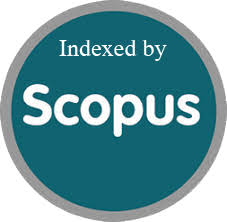Simulation of Adaptive Blind Multiuser Detector in DS-CDMA Wireless Communication
Abstract
Abstract:Multiuser detection is the demodulation of signals of different users interferingwith each other. This phenomena known as multiple access interference occurs mostlyin code division multiple access (CDMA) systems. In this paper the study andanalysis of the blind adaptive multiuser detection algorithm is achieved for directsequencecode division multiple access (DS-CDMA) communication systems. Thegoal is to obtain multiuser detectors that require only knowledge of the signaturewaveform and timing of the desired user. Comparison is performed of the blindadaptive technique with the conventional detector (matched filter detector) or (M.F.D)in perfect power control and in the presence of the near-far effect. In the presentsimulation, the blind adaptive multiuser detection showed an excellent bit error rate ascompared to the conventional detection with the same requirements. Also the blinddetector showed an immunity towards the near-far problem. In this simulation the useof adaptive variable step size is used in contrast to the constant step size showsimprovement in speed convergence and stability of the algorithm adapte








